The carnivore diet has rapidly gained popularity among health enthusiasts, athletes, and individuals seeking dramatic lifestyle changes. Furthermore, this meat-only approach to nutrition has sparked countless success stories worldwide. However, many people struggle with the perceived monotony of eating exclusively animal products. Nevertheless, the reality is quite different when you discover the incredible variety of carnivore diet recipes available.
In essence, the carnivore diet eliminates all plant-based foods, focusing entirely on animal products including meat, fish, eggs, and certain dairy items. Moreover, this approach has helped thousands of people address various health concerns while simultaneously simplifying their meal planning. Additionally, many followers report increased energy levels, improved mental clarity, and significant weight loss results.
Yet, transitioning to a carnivore lifestyle requires proper knowledge and preparation. Therefore, understanding how to create flavorful, satisfying meals becomes absolutely crucial for long-term success. Subsequently, this comprehensive guide will provide you with everything needed to master carnivore cooking, including practical recipes and expert tips.
Table of Content
- Nutrition Information (Per Serving – 4 servings total)
- Nutrition Information (Per Serving – 4 servings total)
- The Remarkable Benefits of Carnivore Diet Recipes
- Four Essential Carnivore Diet Recipe Cards
- Essential Tips for Mastering Carnivore Diet Recipes
- Other Carnivore Diet Recipes
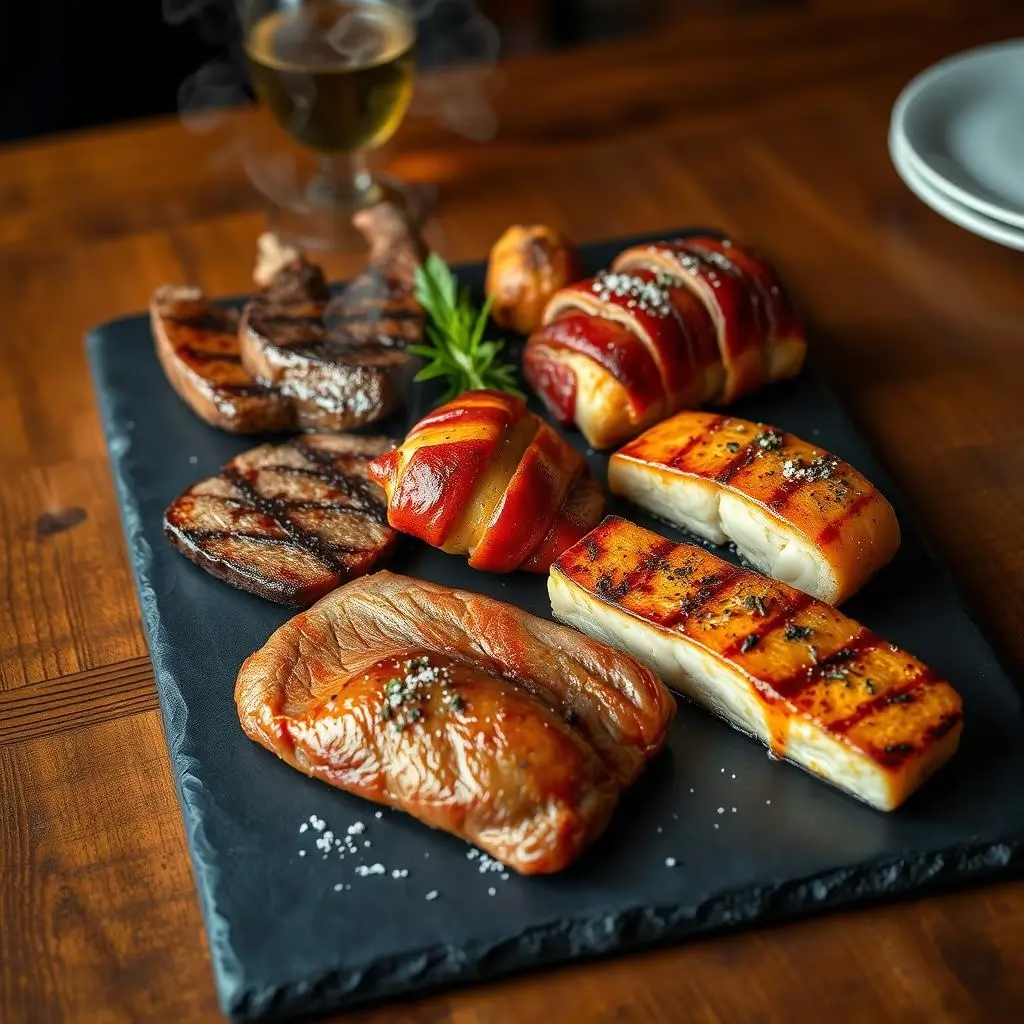
The Remarkable Benefits of Carnivore Diet Recipes
Enhanced Nutritional Density
Carnivore diet recipes naturally provide exceptional nutritional density compared to conventional meal plans. Specifically, animal products contain complete protein profiles with all essential amino acids your body requires. Furthermore, these foods deliver highly bioavailable nutrients including vitamin B12, iron, zinc, and creatine. Additionally, organ meats incorporated into carnivore recipes provide concentrated vitamins and minerals often lacking in modern diets.
Simplified Meal Planning and Preparation
One of the most significant advantages involves the remarkable simplicity of carnivore meal planning. Consequently, grocery shopping becomes streamlined when you focus exclusively on quality animal products. Moreover, meal preparation requires fewer ingredients, reducing both cooking time and kitchen complexity. Subsequently, this approach eliminates the confusion often associated with complicated recipe instructions and extensive ingredient lists.
Improved Digestive Health and Reduced Inflammation
Many individuals experience dramatic digestive improvements when following carnivore diet recipes consistently. Particularly, the elimination of potentially problematic plant compounds allows the digestive system to heal and reset. Furthermore, reduced fiber intake often leads to decreased bloating, gas, and digestive discomfort. Additionally, many followers report significant reductions in systemic inflammation markers.
Enhanced Mental Clarity and Stable Energy
Carnivore diet recipes naturally support stable blood sugar levels throughout the day. Therefore, followers often experience sustained energy without the typical afternoon crashes associated with carbohydrate-heavy meals. Moreover, the steady fuel supply supports improved cognitive function and mental clarity. Subsequently, many people report enhanced focus, productivity, and overall mental performance.
Effective Weight Management
The high protein content in carnivore recipes naturally promotes satiety and reduces overall caloric intake. Furthermore, the thermic effect of protein requires more energy to digest, naturally boosting metabolic rate. Additionally, the elimination of processed foods and refined carbohydrates supports healthy weight management goals.
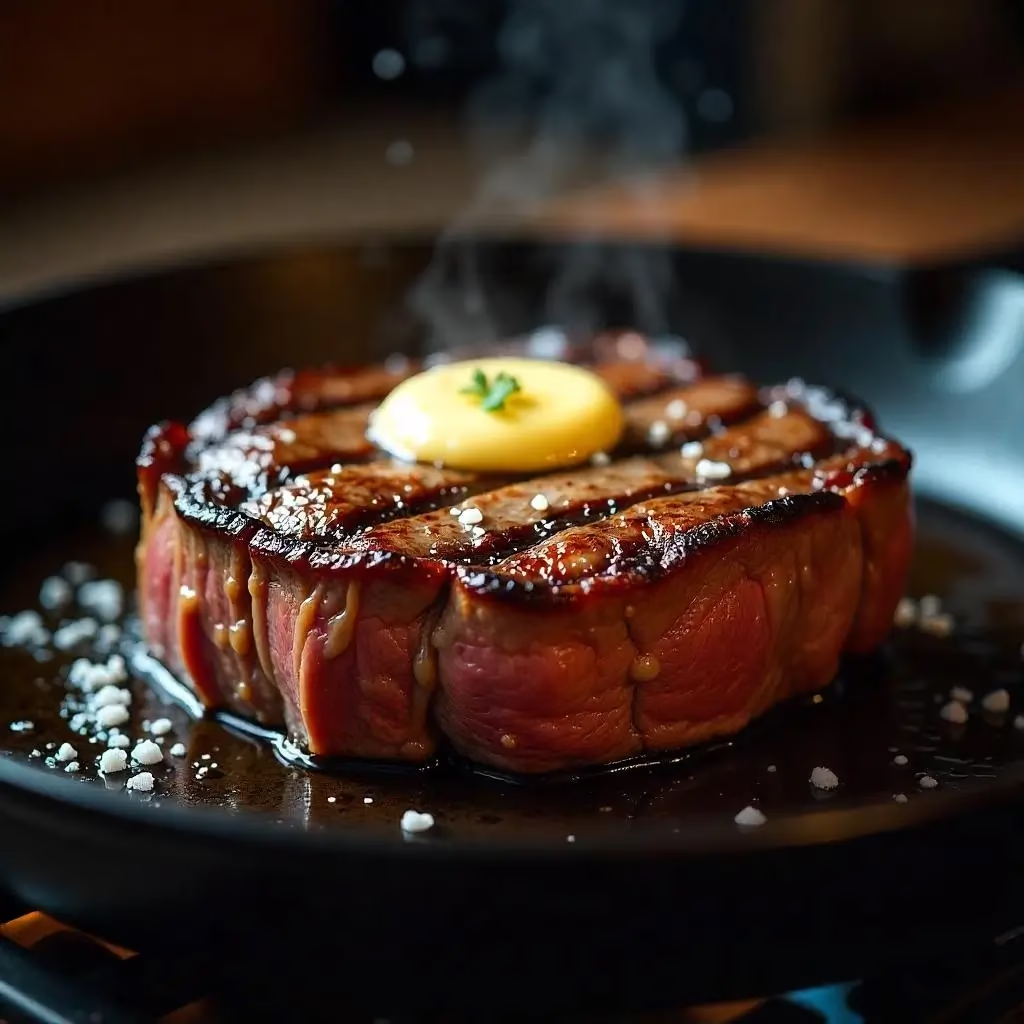
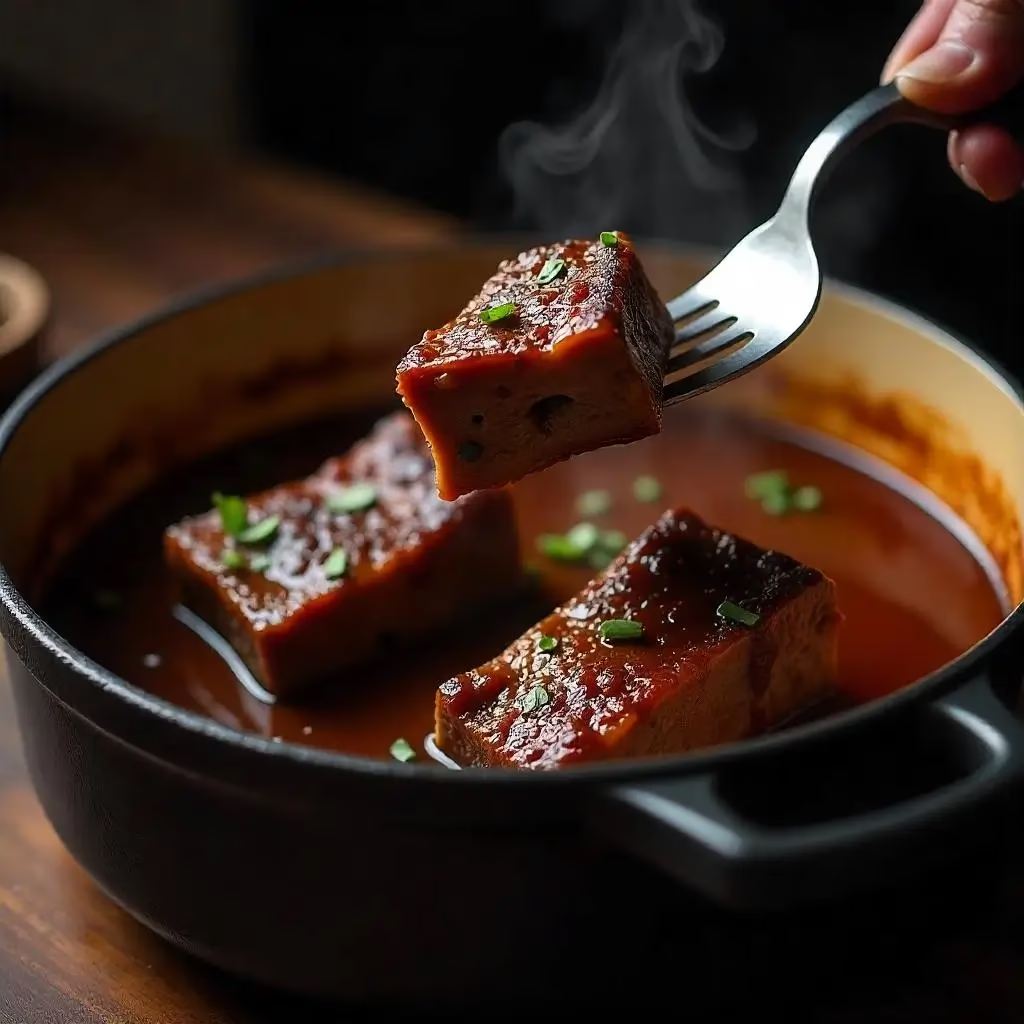

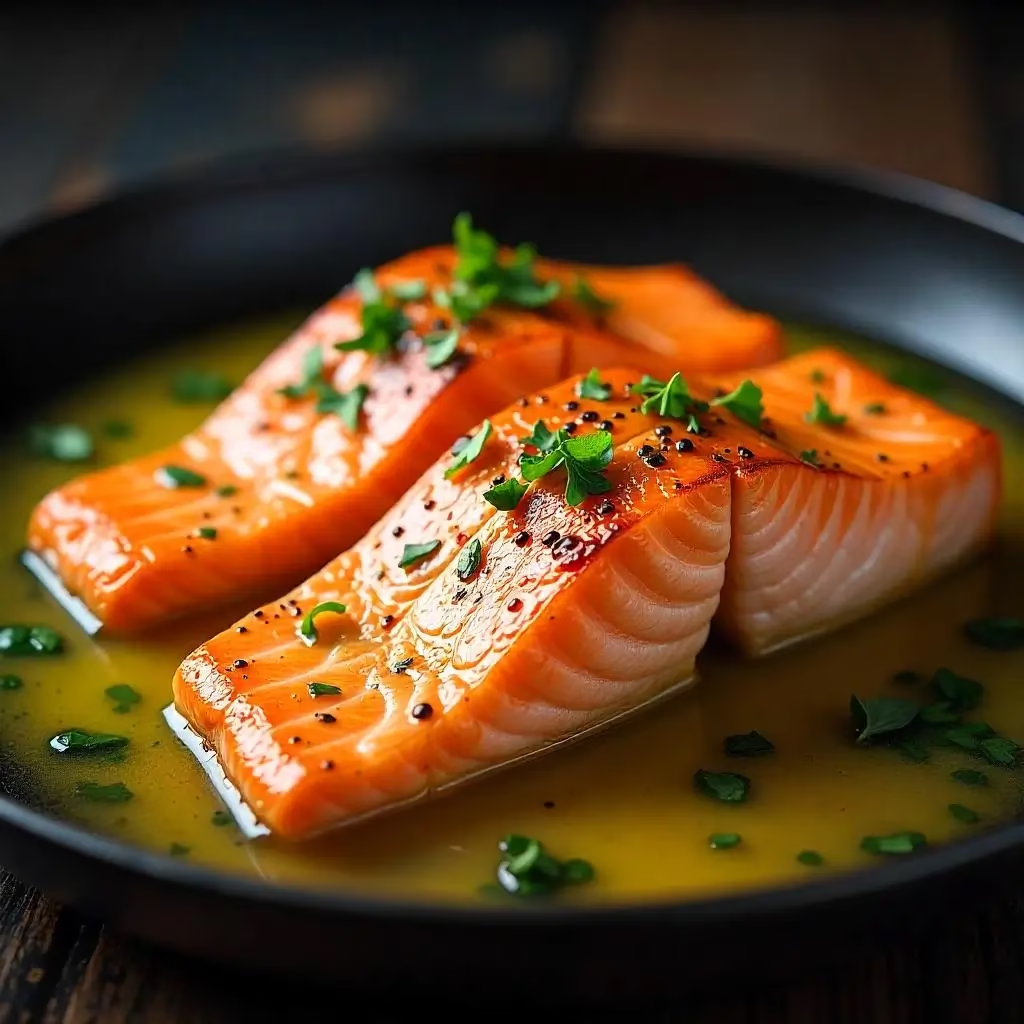
Four Essential Carnivore Diet Recipe Cards
Recipe 1: Perfect Pan-Seared Ribeye Steak
This recipe transforms a premium ribeye into a restaurant-quality masterpiece with a beautiful crust and tender interior. The high-heat searing technique locks in juices while developing incredible flavor.
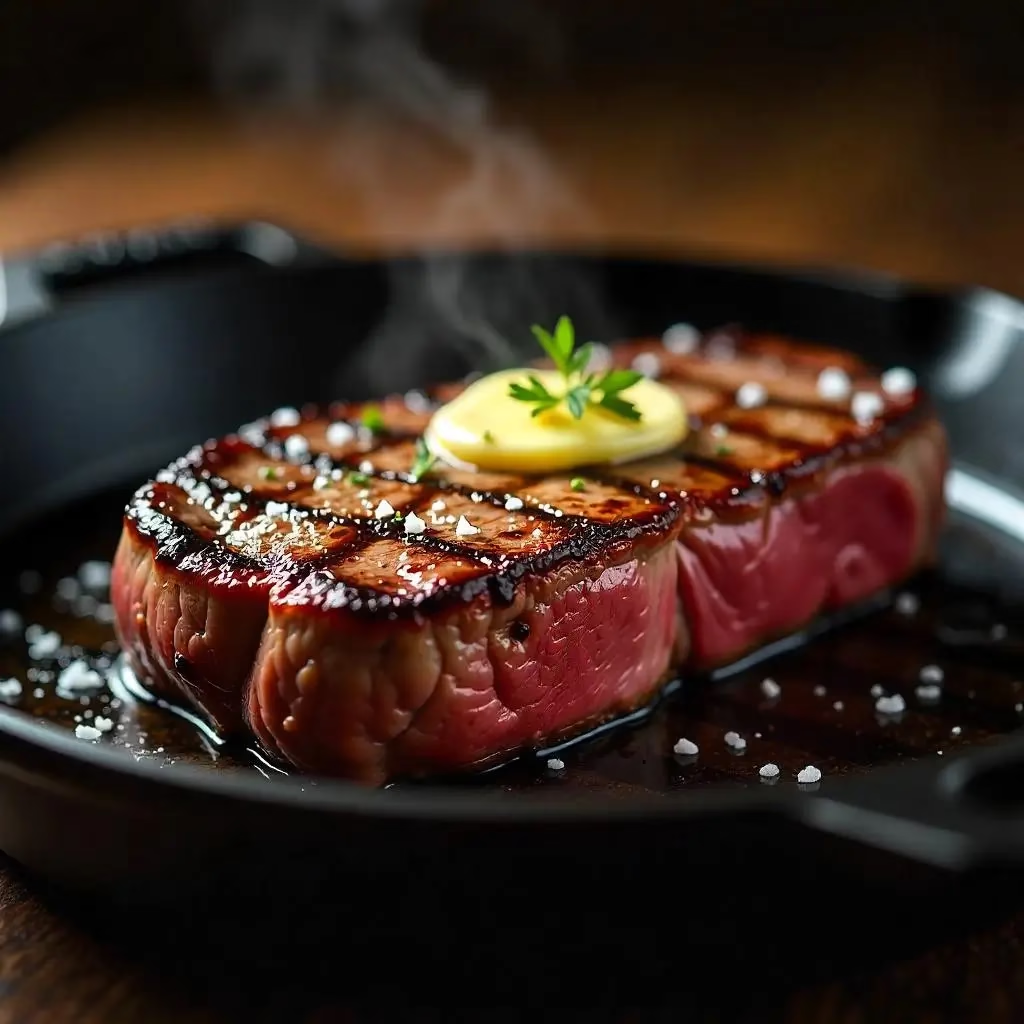
Ingredients
- 1 thick-cut ribeye steak (1.5-2 inches thick)
- 2 tablespoons grass-fed butter
- Coarse sea salt to taste
- Freshly cracked black pepper (optional)
Instructions
- Remove steak from refrigeration 30-45 minutes before cooking to reach room temperature
- Heat cast iron skillet over high heat until smoking
- Season steak generously with salt on both sides
- Place steak in hot skillet and sear for 3-4 minutes without moving
- Flip once and sear opposite side for 3-4 minutes
- Add butter to pan and baste steak continuously for 1-2 minutes
- Check internal temperature (125°F for medium-rare)
- Rest for 5-10 minutes before serving
Storage & Tips
- Consume immediately for best results. Leftover steak can be refrigerated for up to 3 days.
- Use a meat thermometer for accuracy. Let the steak rest to redistribute juices. Choose steaks with good marbling for maximum flavor.
Nutrition Information (Per Serving)
- Calories: 850-950
- Protein: 65-75g
- Fat: 65-75g
- Carbohydrates: 0g
- Saturated Fat: 28-32g
- Cholesterol: 220-250mg

Recipe 2: Slow-Cooked Beef Short Ribs
These fall-off-the-bone beef short ribs require minimal preparation but deliver maximum flavor through low and slow cooking methods.
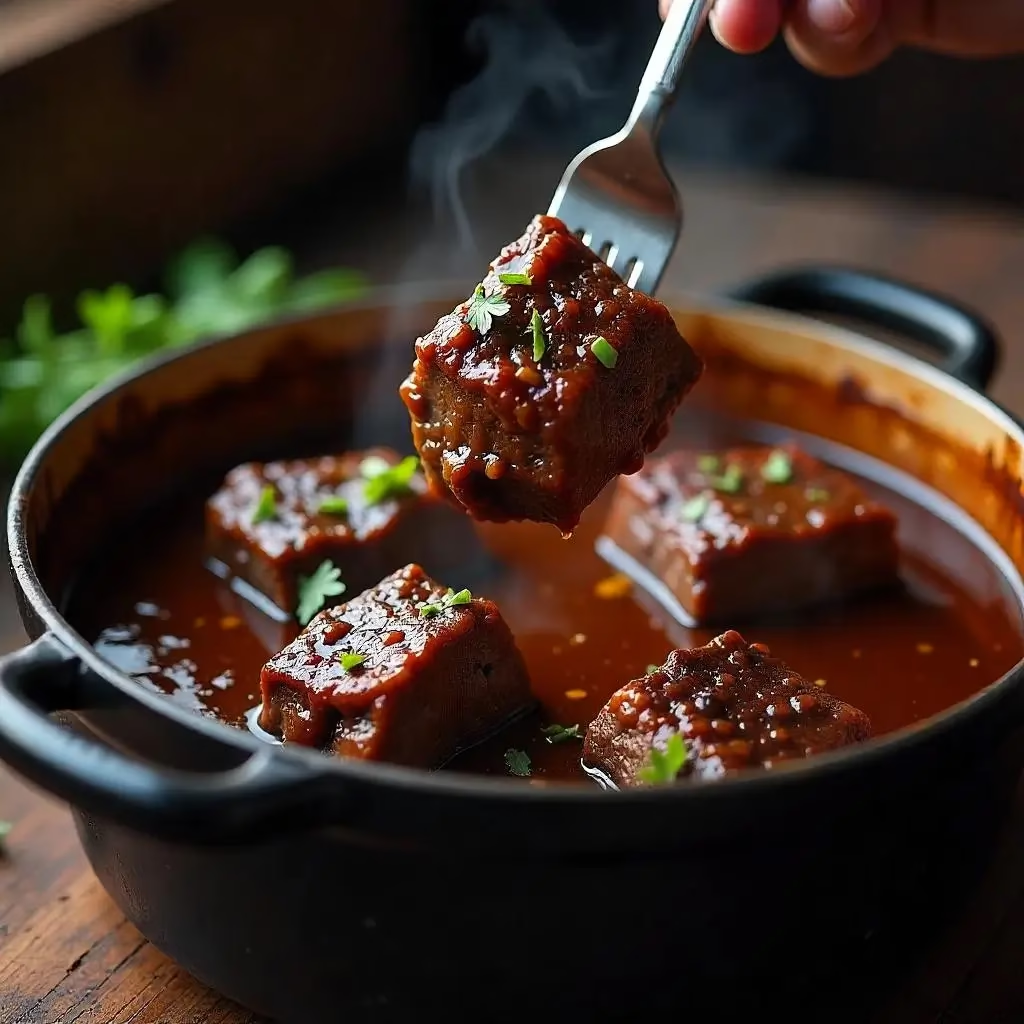
Ingredients
- 3-4 pounds beef short ribs
- 2 tablespoons beef tallow
- Sea salt for seasoning
- 2 cups beef bone broth
Instructions
- Preheat oven to 275°F
- Season short ribs generously with salt
- Heat tallow in Dutch oven over medium-high heat
- Sear ribs on all sides until golden brown
- Add bone broth to pot
- Cover and transfer to oven
- Cook for 3-4 hours until meat easily pulls apart
- Rest for 10 minutes before serving
Storage & Tip:
- Refrigerate for up to 4 days or freeze for up to 3 months in sealed containers.
- Don’t skip the searing step for flavor development. Check periodically and add more broth if needed. Bones can be saved for making broth.
Nutrition Information (Per Serving – 4 servings total)
- Calories: 720-820
- Protein: 55-62g
- Fat: 52-62g
- Carbohydrates: 0g
- Saturated Fat: 22-26g
- Cholesterol: 180-200mg
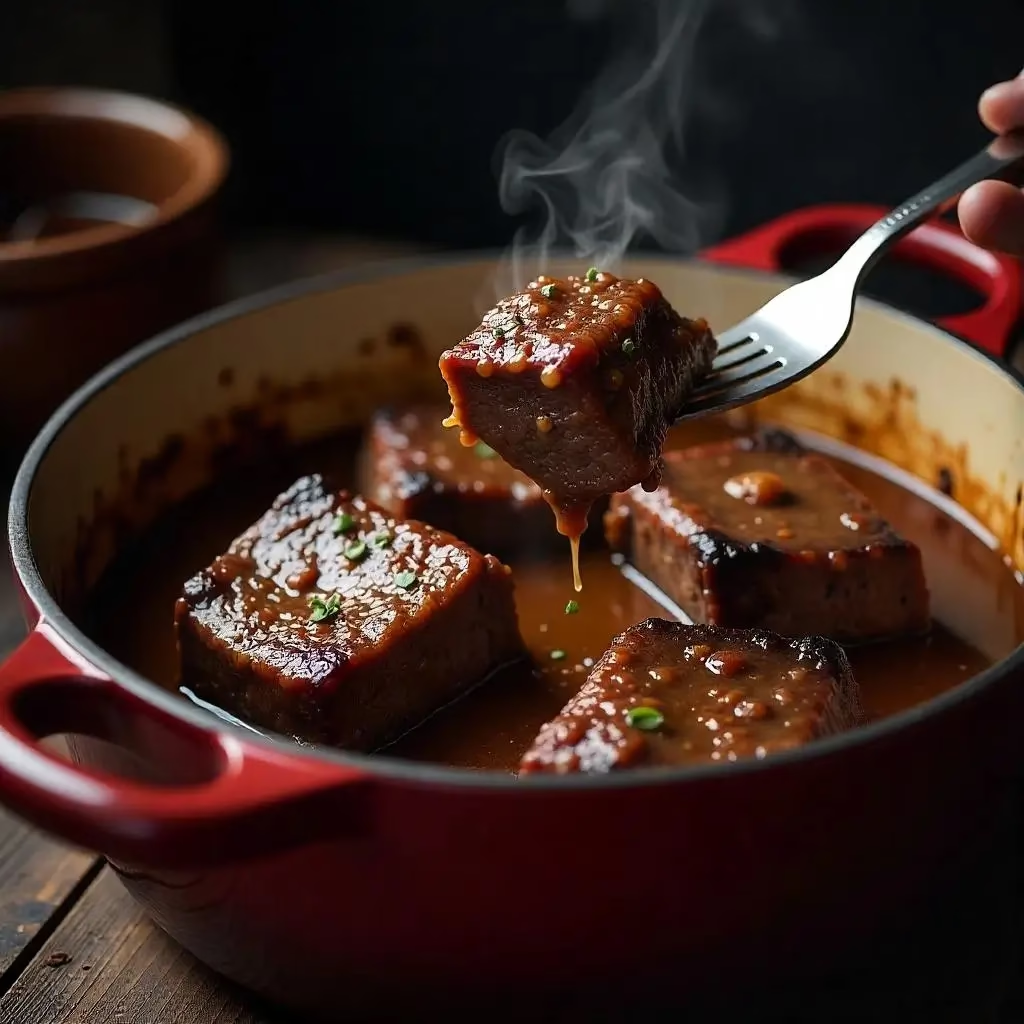
Recipe 3: Crispy Meat-Wrapped Chicken Thighs
Juicy chicken thighs wrapped in crispy meat create the perfect combination of flavors and textures in this simple yet elegant dish.

Ingredients
- 6 boneless chicken thighs
- 12 slices thick-cut meat
- Sea salt for seasoning
- 2 tablespoons duck fat
Instructions
- Preheat oven to 400°F
- Season chicken thighs with salt
- Wrap each thigh with 2 meat slices
- Heat duck fat in oven-safe skillet
- Place wrapped thighs seam-side down in skillet
- Sear for 3-4 minutes until meat begins crisping
- Transfer skillet to oven and bake 25-30 minutes
- Rest for 5 minutes before serving
Storage & Tips:
- Store in refrigerator for up to 4 days. Reheat in oven to maintain crispiness.
- Secure meat with toothpicks if necessary. Don’t overcook to maintain juiciness. Save rendered fat for future cooking.
Nutrition Information (Per Serving – 6 servings total)
- Calories: 580-650
- Protein: 45-52g
- Fat: 42-48g
- Carbohydrates: 0g
- Saturated Fat: 16-19g
- Cholesterol: 165-185mg

Recipe 4: Garlic Butter Salmon Fillets
Fresh salmon fillets cooked in rich garlic butter create an elegant meal that’s both nutritious and incredibly flavorful.
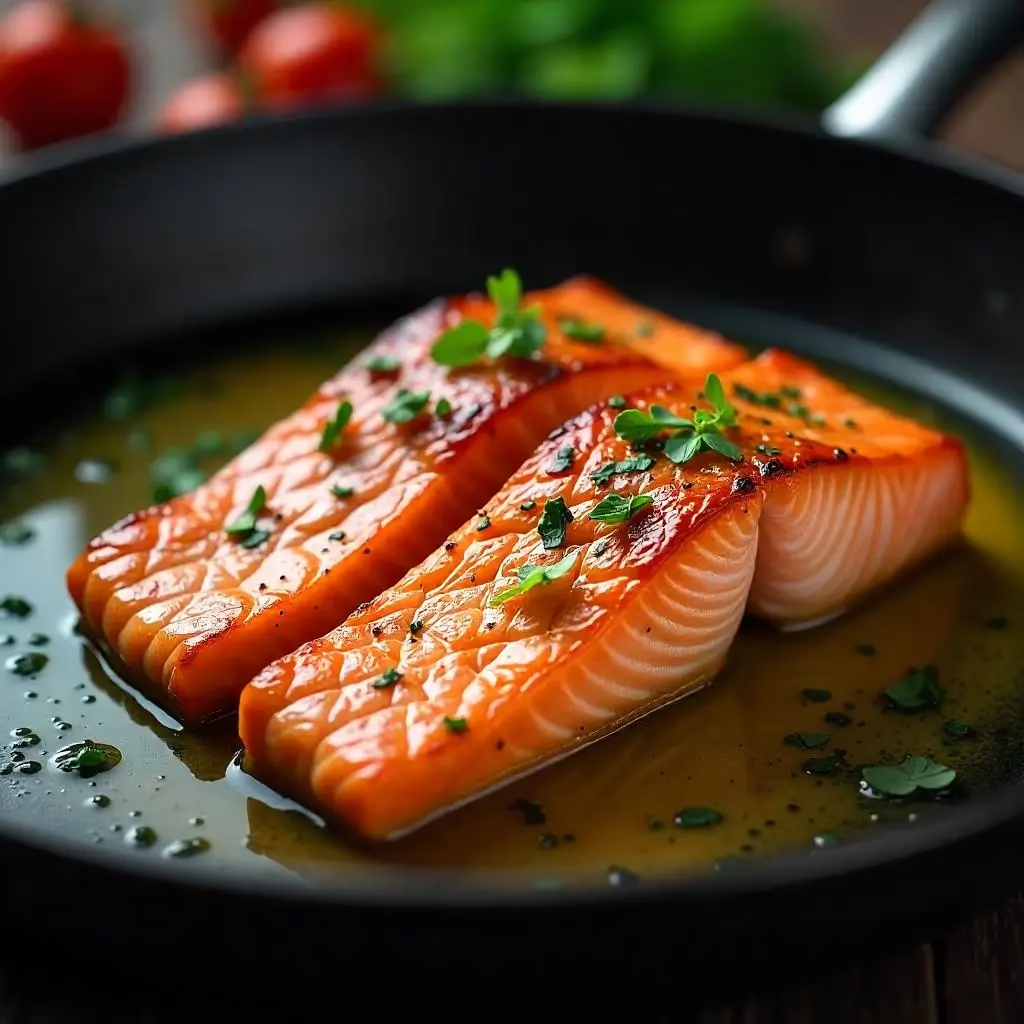
Ingredients
- 4 salmon fillets (6 oz each)
- 4 tablespoons grass-fed butter
- 3 cloves garlic, minced
- Sea salt for seasoning
- Fresh herbs (optional)
Instructions
- Remove salmon from refrigeration 15 minutes before cooking
- Season fillets with salt on both sides
- Heat butter in large skillet over medium heat
- Add garlic and cook until fragrant (30 seconds)
- Place salmon skin-side up in skillet
- Cook 4-5 minutes without moving
- Flip carefully and cook additional 3-4 minutes
- Baste with garlic butter continuously
Storage & Tips:
- Best consumed fresh. Refrigerate leftovers for up to 2 days maximum.
- Don’t overcook salmon to prevent dryness. Skin should be crispy if cooked properly. Choose wild-caught salmon when available.
Nutrition Information (Per Serving – 4 servings total)
- Calories: 420-480
- Protein: 38-42g
- Fat: 28-35g
- Carbohydrates: 0g
- Saturated Fat: 12-15g
- Cholesterol: 95-110mg
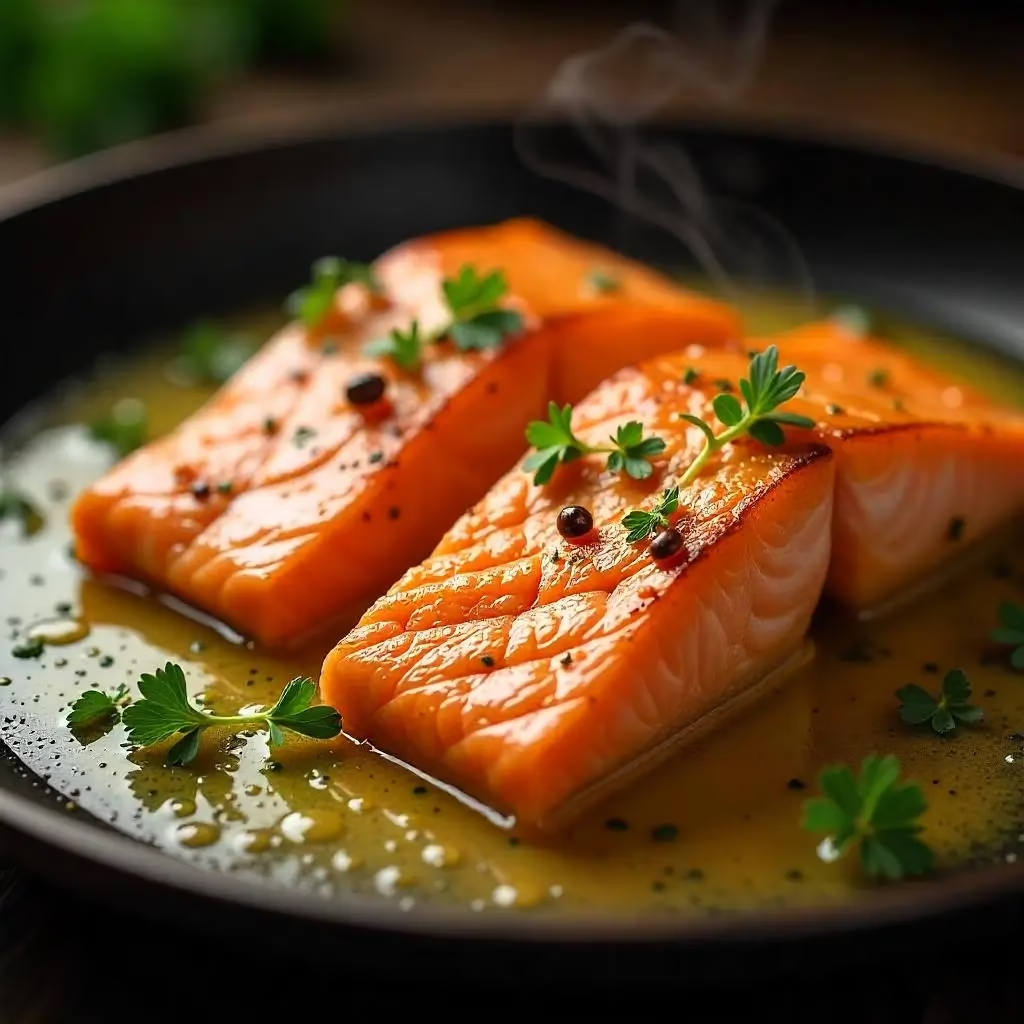
Essential Tips for Mastering Carnivore Diet Recipes
Source Quality Ingredients
The foundation of exceptional carnivore recipes begins with sourcing the highest quality animal products available. Therefore, prioritize grass-fed beef, wild-caught fish, and pasture-raised poultry whenever possible. Moreover, establishing relationships with local farmers and butchers can provide access to premium cuts at reasonable prices. Additionally, consider purchasing whole animals or large portions to maximize both quality and value.
Master Different Cooking Methods
Diversifying your cooking techniques prevents monotony while maximizing flavor development in carnivore recipes. Consequently, experiment with grilling, slow cooking, braising, and pan-searing to create varied textures and tastes. Furthermore, learning proper temperature control ensures optimal results with different cuts of meat. Additionally, incorporating smoking techniques can add incredible depth and complexity to your meals.
Embrace Fat as Flavor
Fat plays a crucial role in creating satisfying and delicious carnivore diet recipes. Therefore, don’t fear incorporating healthy animal fats like tallow, lard, and butter into your cooking. Moreover, these fats enhance nutrient absorption while providing essential fatty acids. Subsequently, properly rendered fats can transform simple ingredients into restaurant-quality dishes.
Season Strategically
While the carnivore diet limits seasonings to animal-derived options, strategic use of salt enhances natural flavors significantly. Furthermore, different types of salt including sea salt, Himalayan pink salt, and finishing salts provide unique flavor profiles. Additionally, some followers incorporate bone broth and organ meat powders for additional seasoning options.
Plan for Variety
Preventing boredom requires intentional planning and creativity in your carnivore recipe rotation. Therefore, incorporate different animal proteins throughout the week including beef, pork, lamb, fish, and poultry. Moreover, experimenting with various cuts from the same animal provides diverse textures and flavors. Subsequently, organ meats can be incorporated gradually to expand your nutritional and culinary horizons.
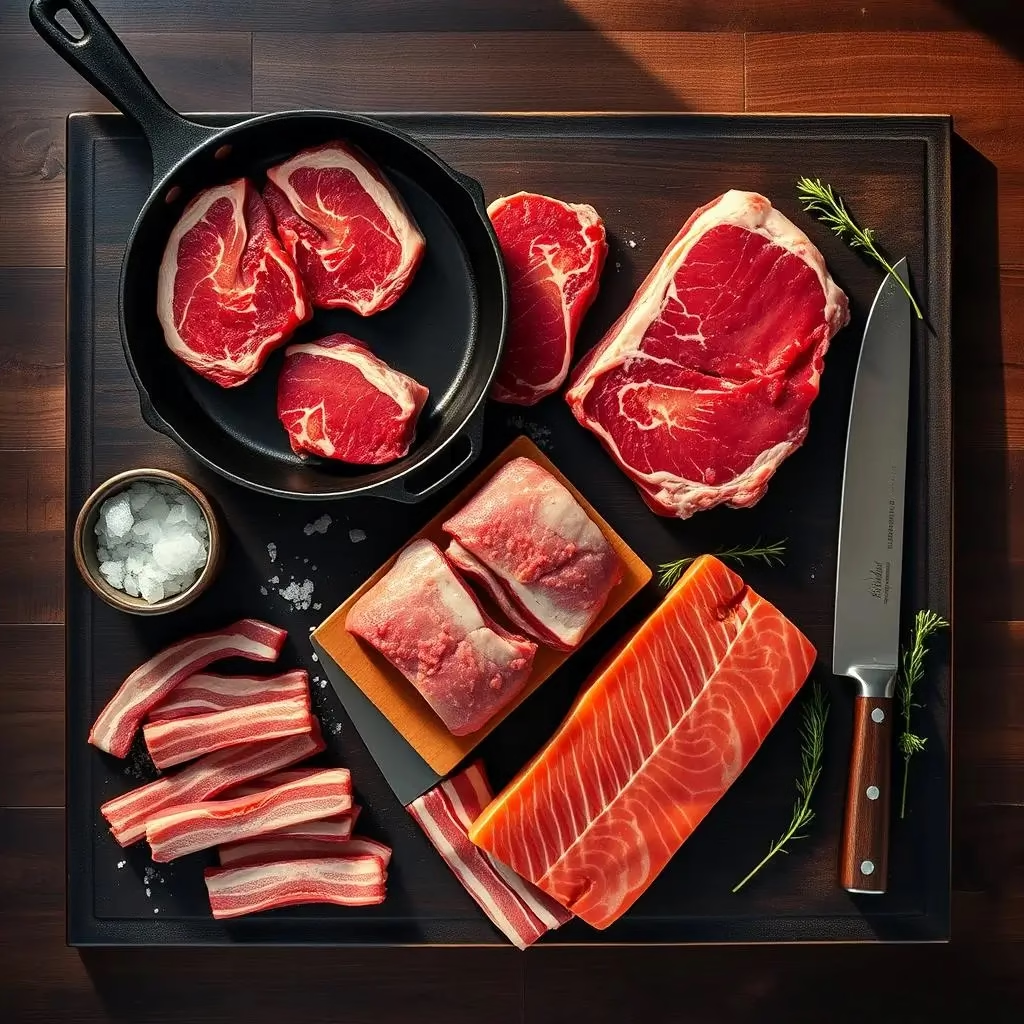
Other Carnivore Diet Recipes
- Keto Chili without Beans
- Grilled Buffalo Chicken Breast
- Dijon Mustard Salmon
- Slow-Roasted Chicken
- Prime Rib
- Beef Tips and Gravy
Mastering carnivore diet recipes opens up a world of culinary possibilities while supporting your health and wellness goals. Furthermore, the simplicity and effectiveness of this approach make it accessible to people with varying cooking experience levels. Additionally, the recipes provided demonstrate that eating exclusively animal products doesn’t mean sacrificing flavor or satisfaction.
The key to long-term success lies in embracing variety, sourcing quality ingredients, and continuously experimenting with different cooking techniques. Moreover, the health benefits associated with properly executed carnivore meals extend far beyond simple weight management. Subsequently, many followers discover renewed energy, improved digestion, and enhanced overall well-being.
Therefore, whether you’re just beginning your carnivore journey or looking to expand your current recipe repertoire, these guidelines and recipes provide a solid foundation for success. Furthermore, remember that consistency and patience are essential as your body adapts to this new way of eating. Ultimately, the carnivore diet represents more than just a meal plan – it’s a pathway to discovering optimal health through the power of nutrient-dense animal foods.

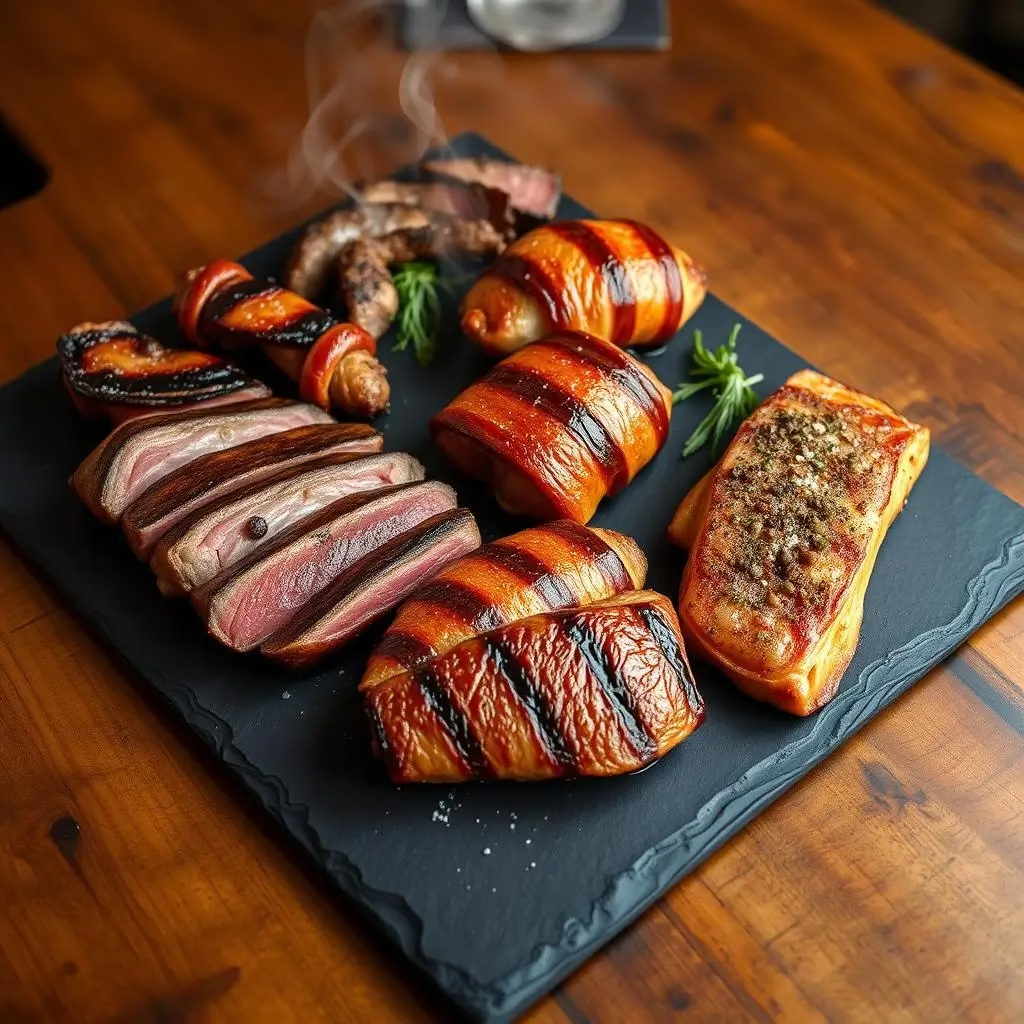
février 4, 2025 at 9:52 pmThanks for the recipe
février 4, 2025 at 9:54 pmYour welcome, Visit us
février 8, 2025 at 3:19 pm[…] If you want to know more about Amish Cinnamon Bread recipes […]
février 24, 2025 at 12:05 pm[…] For mor information about Carnivore Diet Recipes […]
mars 16, 2025 at 12:50 amThe article is very well-written. I appreciate the effort the author put into it. Thanks for sharing.
mars 16, 2025 at 2:04 pmI liked the personal detail you added to your post; it made it feel more personal.